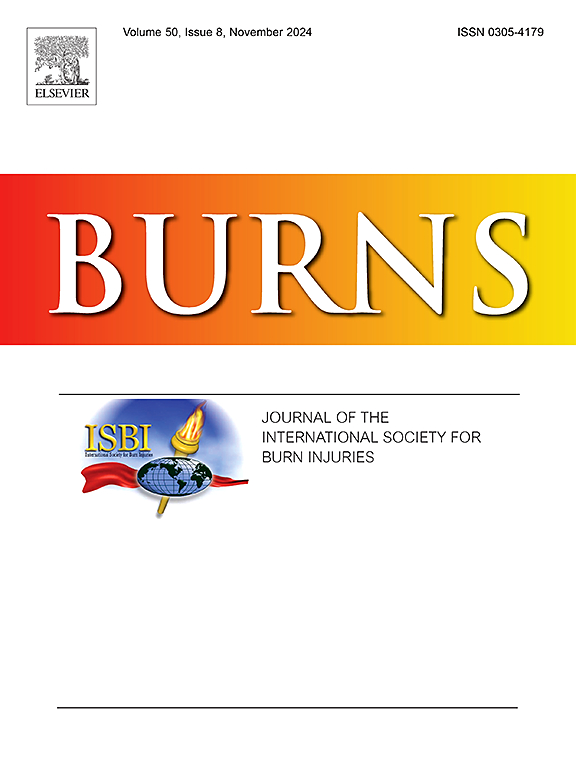了解无家可归者火灾风险的驱动因素
IF 2.9
3区 医学
Q2 CRITICAL CARE MEDICINE
引用次数: 0
摘要
影响无家可归者的火灾危险包括自然和建筑环境、社会环境和人类行为。确定火灾风险和烧伤的关键驱动因素可以为伤害预防和控制措施提供信息。我们对无家可归的烧伤患者进行了12次关键线人访谈。采用演绎和归纳策略对转录本进行编码。Corcoran的火灾风险概念模型被应用于将因素分为环境、社会和行为三类。最常用的火源是丙烷、洗手液和其他含酒精的液体。不安全的明火和不适当的丙烷罐储存是经常被确定的危险。参与者描述了在处理火灾危险时需要考虑的环境、社会和行为因素的相互作用。例如,在帐篷内使用丙烷加热器是很常见的,因为它可以有效地为生活空间供暖,并限制设备被盗的风险。该项目确定了特定的环境风险、社会经济风险及其与火灾隐患的相互作用,为无家可归者的伤害控制奠定了基础。需要在复杂的无家可归环境中评估伤害预防战略(例如,暴露于恶劣天气、不安全和潜在暴力的生活条件、物质使用、社会边缘化以及获得伤害预防媒体的机会有限)。本文章由计算机程序翻译,如有差异,请以英文原文为准。
Understanding drivers of fire risk with people experiencing homelessness
Fire hazards affecting people who are unhoused span natural and built environments, social circumstances, and human behavior. Identifying key drivers of fire risk and burn injury can inform injury prevention and control initiatives. We conducted 12 key informant interviews with burn patients who were unhoused. Deductive and inductive strategies were used to code transcripts. Corcoran’s conceptual model of fire risk was applied in order to group factors into environmental, social, and behavioral categories. The most frequently used fire sources were propane, hand sanitizer, and other alcohol-based liquids. Unsafely contained open flames and improper propane tank storage were frequently identified hazards. Participants described the interplay of environmental, social, and behavioral factors that need to be accounted for when addressing fire hazards. For example, the use of propane heaters inside tents is common because it is effective in warming living spaces and limits the risk of having equipment stolen. This project identified specific environmental risks, socioeconomic risks, and their interplay with identified fire hazards as foundational to injury control for people experiencing homelessness. Injury prevention strategies need to be evaluated within the complex environments of homelessness (e.g., exposure to severe weather, unsafe and potentially violent living conditions, substance use, social marginalization, and limited access to injury prevention media).
求助全文
通过发布文献求助,成功后即可免费获取论文全文。
去求助
来源期刊

Burns
医学-皮肤病学
CiteScore
4.50
自引率
18.50%
发文量
304
审稿时长
72 days
期刊介绍:
Burns aims to foster the exchange of information among all engaged in preventing and treating the effects of burns. The journal focuses on clinical, scientific and social aspects of these injuries and covers the prevention of the injury, the epidemiology of such injuries and all aspects of treatment including development of new techniques and technologies and verification of existing ones. Regular features include clinical and scientific papers, state of the art reviews and descriptions of burn-care in practice.
Topics covered by Burns include: the effects of smoke on man and animals, their tissues and cells; the responses to and treatment of patients and animals with chemical injuries to the skin; the biological and clinical effects of cold injuries; surgical techniques which are, or may be relevant to the treatment of burned patients during the acute or reconstructive phase following injury; well controlled laboratory studies of the effectiveness of anti-microbial agents on infection and new materials on scarring and healing; inflammatory responses to injury, effectiveness of related agents and other compounds used to modify the physiological and cellular responses to the injury; experimental studies of burns and the outcome of burn wound healing; regenerative medicine concerning the skin.
 求助内容:
求助内容: 应助结果提醒方式:
应助结果提醒方式:


